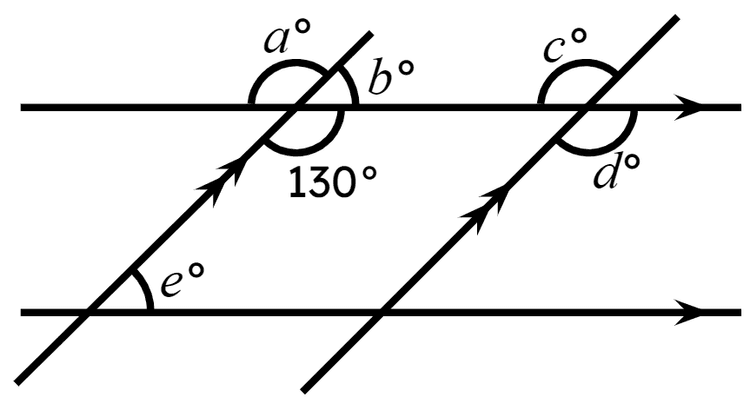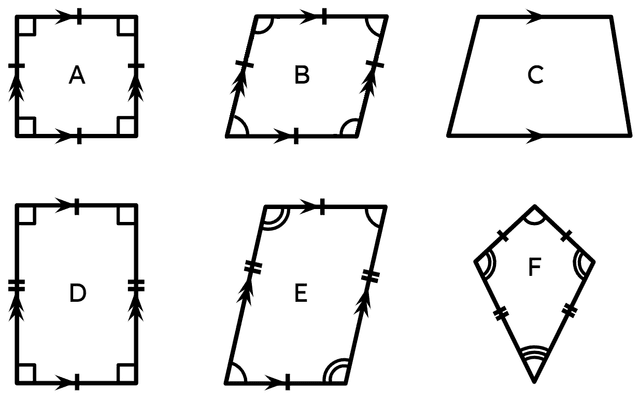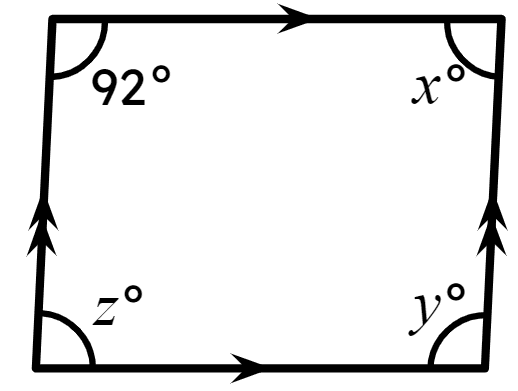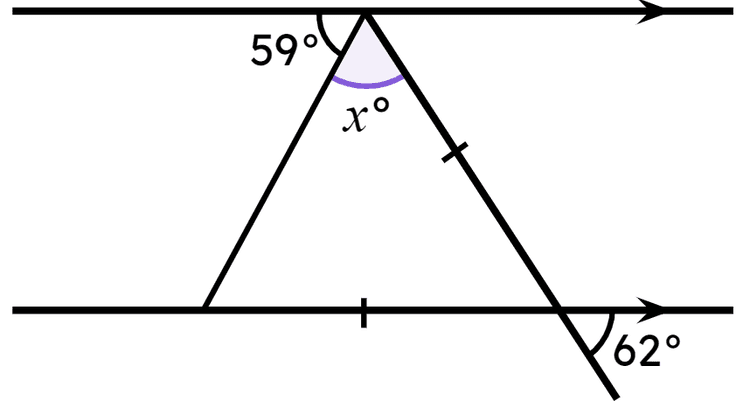Myths about teaching can hold you back


- Year 10•
- Foundation
Checking and securing understanding of properties of shapes
I can identify a shape from its properties and state the properties of a given shape.


- Year 10•
- Foundation
Checking and securing understanding of properties of shapes
I can identify a shape from its properties and state the properties of a given shape.
These resources were made for remote use during the pandemic, not classroom teaching.
Switch to our new teaching resources now - designed by teachers and leading subject experts, and tested in classrooms.
Lesson details
Key learning points
- Many shapes have similar properties.
- It is not always clear which shape is being described so more details may be needed.
- Knowing the properties of shapes can help you solve more complex problems.
Keywords
Parallelogram - A parallelogram is a quadrilateral with two pairs of parallel and equal sides.
Rhombus - A rhombus is parallelogram where all the sides are the same length.
Trapezium - A trapezium is a quadrilateral with exactly one pair of parallel sides.
Equilateral triangle - Equilateral triangles have three equal-sized angles and three edges of equal length. They are regular triangles.
Isosceles triangle - Isosceles triangles have two angles that are equal. That is also true for its side lengths: two sides are of equal length.
Common misconception
Angles facts cannot be used with shapes as shapes have line segments rather than lines.
It is the properties of the lines, such as whether they are parallel, that are important, not their length.
To help you plan your year 10 maths lesson on: Checking and securing understanding of properties of shapes, download all teaching resources for free and adapt to suit your pupils' needs...
To help you plan your year 10 maths lesson on: Checking and securing understanding of properties of shapes, download all teaching resources for free and adapt to suit your pupils' needs.
The starter quiz will activate and check your pupils' prior knowledge, with versions available both with and without answers in PDF format.
We use learning cycles to break down learning into key concepts or ideas linked to the learning outcome. Each learning cycle features explanations with checks for understanding and practice tasks with feedback. All of this is found in our slide decks, ready for you to download and edit. The practice tasks are also available as printable worksheets and some lessons have additional materials with extra material you might need for teaching the lesson.
The assessment exit quiz will test your pupils' understanding of the key learning points.
Our video is a tool for planning, showing how other teachers might teach the lesson, offering helpful tips, modelled explanations and inspiration for your own delivery in the classroom. Plus, you can set it as homework or revision for pupils and keep their learning on track by sharing an online pupil version of this lesson.
Explore more key stage 4 maths lessons from the Angles unit, dive into the full secondary maths curriculum, or learn more about lesson planning.

Equipment
Licence
Prior knowledge starter quiz
6 Questions
Q1.Which angle fact could be used to justify why $$a=130$$ using a single statement?

Q2.Which angle fact could be used to justify why $$b=50$$ using a single statement?

Q3.Which angle fact could be used to justify why $$c=130$$ using a single statement?

Q4.Which angle fact could be used to justify why $$d=130$$ using a single statement?

Q5.Which angle fact could be used to justify why $$e=50$$ using a single statement?

Q6.If the pair of horizontal lines were dragged further apart from each other, what would happen to the values of $$a$$, $$c$$ and $$d$$?

Assessment exit quiz
6 Questions
Q1.Match the triangles with the triangle types.

A -
equilateral
B -
isosceles
C -
scalene
Q2.Match the quadrilaterals with the quadrilateral types.

A -
square
B -
rhombus
C -
trapezium
D -
rectangle
E -
parallelogram
F -
kite
Q3.The size of the angle $$x$$ is °.

Q4.The size of the angle $$y$$ is °.

Q5.Which statements are true about $$z$$?

Q6.The size of the angle $$x$$ is °.


